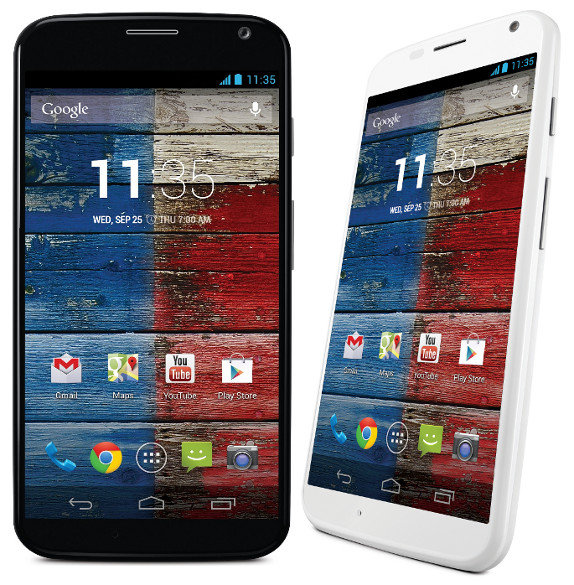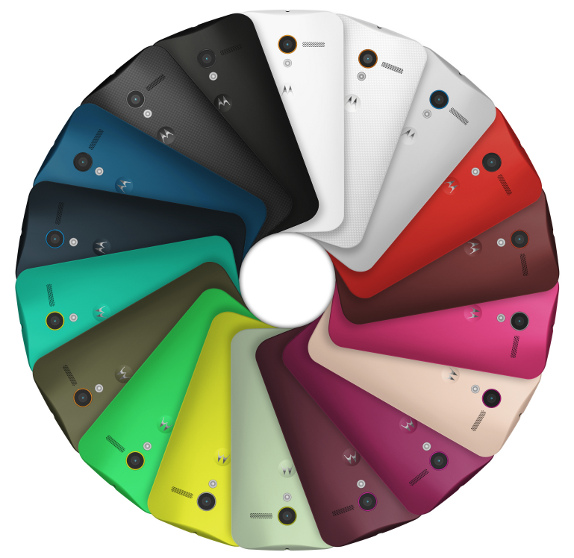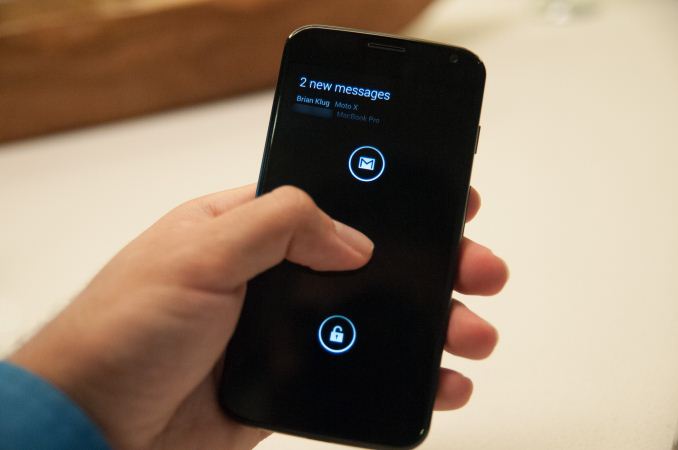
The Moto X just went official in the USA, with a ton of information(aka press coverage) doing the usual internet rounds. With modest hardware specifications, Motorola has taken a completely different approach with its latest flagship device. So different, it makes you wonder what really is special with this device. Unless you want to read through various long form articles, you won’t really know what the stand-out features are. We have taken that effort instead, so here is a compiled list of really interesting Moto X features you definitely need to know.

Ergonomic design and customisations
The Moto X, according to various hands on reports, has a really comfortable design. Thanks to the slightly conically shaped back and an extremely thin and curved bezel, the device sits perfectly in the hands, and is apparently one of they key design decisions they took. Reports also note that the display and the sides are fused together, in a unique plastic-glass combination. Apart from the unique design, the Moto X is extremely customizable. While the shells are actually not user replaceable, you are given plenty of colour choices before you buy one, and it even includes wooden designs. The front of the phone comes in black or white, with 18 user customizable colours for the back plate, 7 for the buttons and the camera rim, and even user engraving for the back. These customization choices are very unique, and can be considered a USP for the device. And hey, this is how you customize the device –
httpv://www.youtube.com/watch?v=HnTvmB44Cec
10 Megapixel RGBC camera
The camera on the Moto X is a 10 megapixel 1/2.6″ sensor with a pixel size of 1.4 um. This is slightly bigger and possibly better than the recent flagships with 1/3″ sensors and 1.1 um pixel sizes. It also sports a f2.4 lens and a true 16:9 format sensor. But one thing that stands out is the colour filter Moto has chosen to use on top of the sensors. This is provided by the Omnivision OV10820 and OV660 combo.
Learning time! Before getting too technical, you need to know why a colour filter is used over the pixels. Usually in a digital sensor, each pixel records photons as it receives, and it has only one value – intensity. With that, we can only create a grayscale photo, so to overcome that, a colour filter array, called the Bayer filter is placed over the individual sensors with a certain arrangement, so that each pixel represents a colour, which are then interpolated for a final image.
So, instead of using the usual RG,BG colour filter array on top of the sensor, Omnivision has chosen to use a different RG,BC(Clear) array, which possibly increases sensitivity in low light conditions, just like how a RG,BW(White) increases overall brightness of a photo. Pretty interesting changes on the Moto X, and we would love to see how the real life performance is.
Touchless control for Google Now
Another interesting feature that already leaked before the announcement, is the always listening Google Now service for the Moto X. This is called “Touchless control” and is primarily enabled by the specific NLP(Natural Language Processor) in the Moto X8 chipset. Acting as one of the cores in the 8 core chipset, this NLP is always on and keeps listening for a specific voice command, in this case, it is “OK Google”, just like the Google Glass. Once the command is spoken, the screen automatically wakes up and listens to your commands. It works exactly how Google Now currently works, providing various natural language interactions, without the touch of your hand.
Also, since there is a separate processor dedicated to this function, the power drawn by it is extremely low, which helps the always-on case.
Active Display and Quick Capture

Credits to AnandTech for the image
Active Display is another interesting glance-and-go feature that is powered by another dedicated low power processor, dubbed the “Contextual processor”. Using the low power tendencies of the AMOLED screen, the Moto X provides interactive notifications in a minimalistic presentation. There is a standard bubble with whatever the latest notification is, and you can interact with it by swiping up or down, or just swipe to the left to clear it out. This comes in really handy, as most notifications are glance-and-go and we are glad that an Android OEM has finally caught on to this idea, previously pioneered by Nokia albeit without the interactivity. Now, this contextual processor, part of the Moto X8 chipset also powers another always on feature, called Quick Capture.
Apparently, the Camera app can boot very fast, and it is made even easier with a gesture. You twist and turn the device with your hands like how you open a tap or a screw, and it will take you directly to the camera. Moto claims this is one of the fastest ways to access the camera, but the jury is still out on that one. Yet another useful(?) feature powered by the low power contextual processor to save the 2200 mAH battery’s life.
Hands free authentication
Finally, we have a feature that is not actually a part of the Moto X, but works with it. Motorola is actually planning to provide NFC authentication tags that unlock your password protected device without you keying the password in. Yes, one has to just near the NFC based plastic tokens that are wearable, and the device doesn’t ask for a password. It does ask for a password otherwise, if the NFC tag is not nearby. This unique functionality also lets you create these safe zones where the plastic tags are pre-installed, like for example, in your car. While this feature may not seem that novel, it is indeed really interesting.
So, the above five features are the most interesting Moto X innovations that we need you to know. Do let us know what you feel about these features in the comment section below, and if you are looking for specifications, here is the official announcement post.
